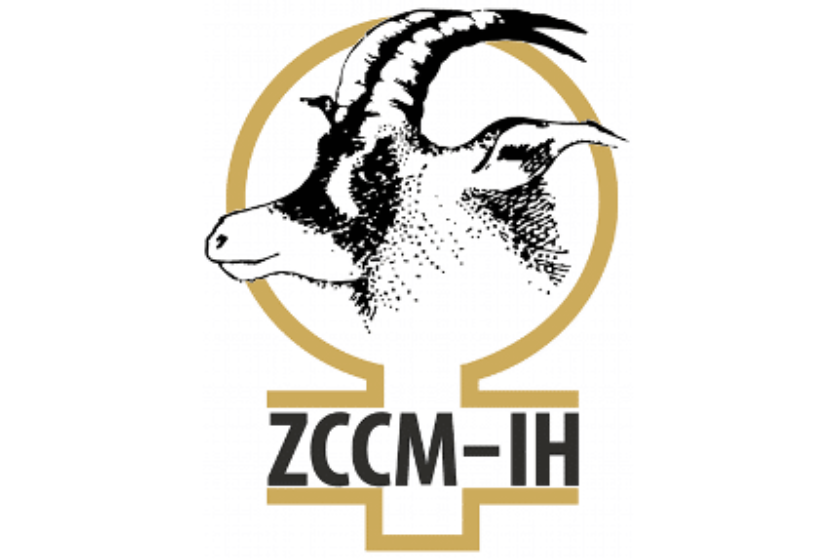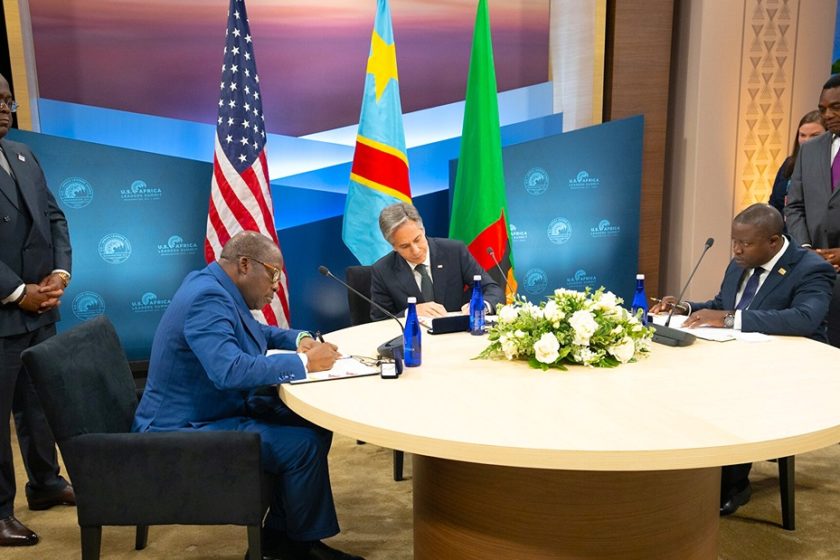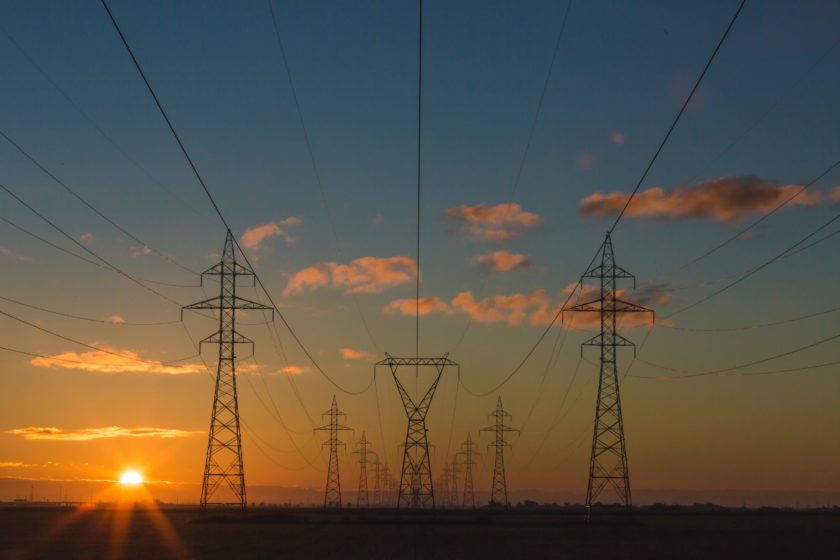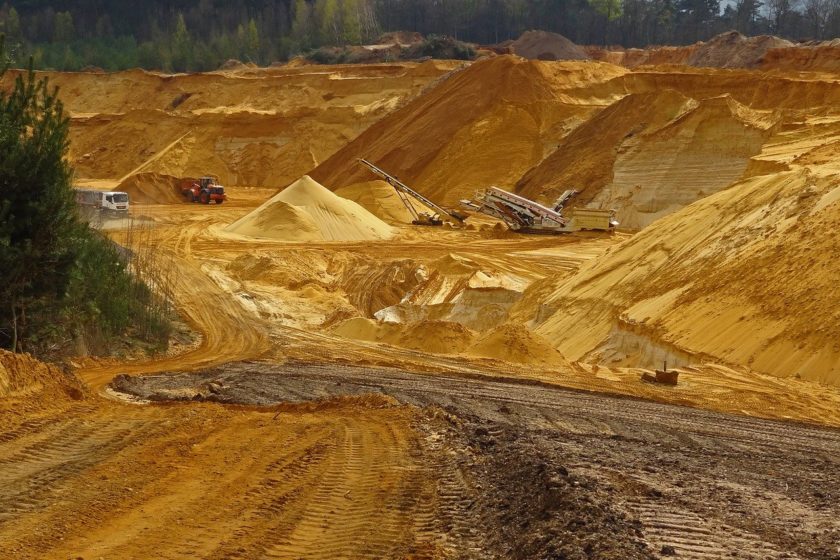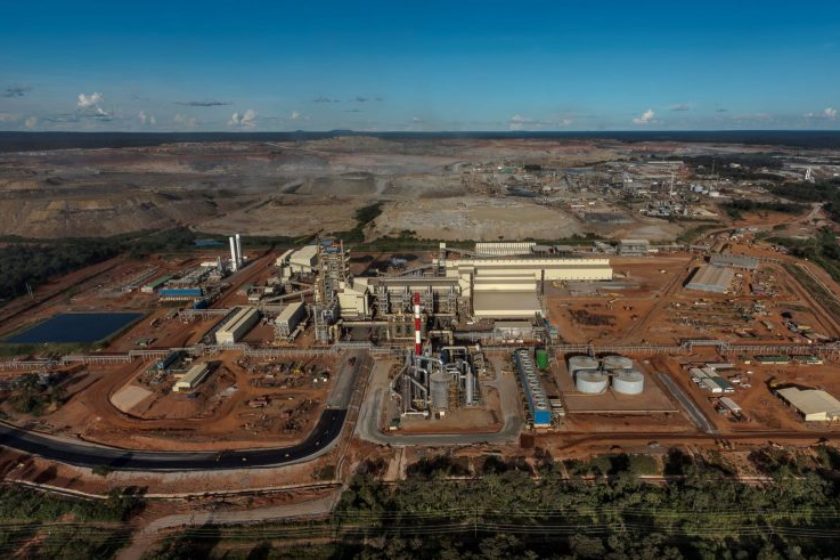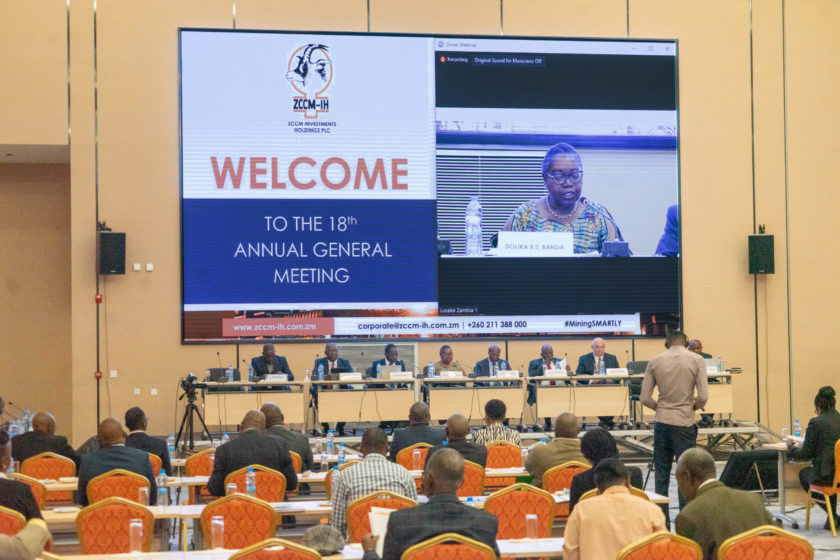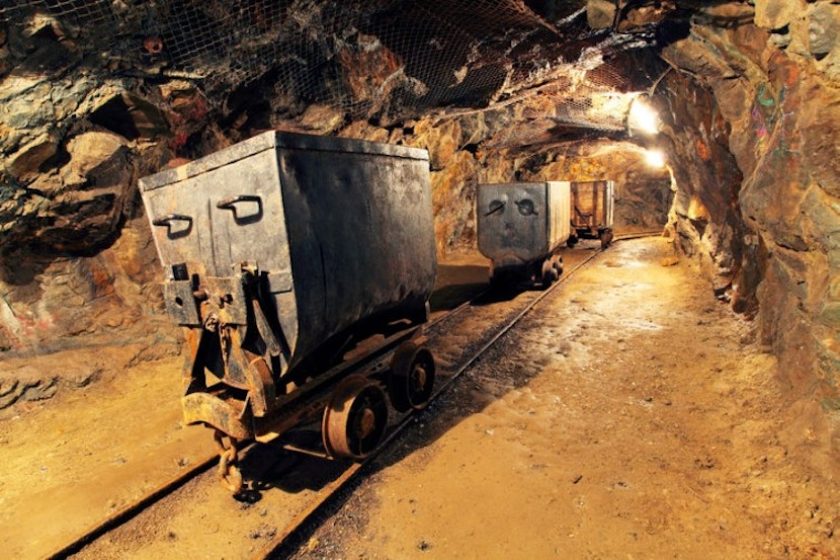The state-owned mining investment company ZCCM-IH recently announced its decision to convert its right to dividend payments from its stake in Kansanshi Mining Plc to a revenue-sharing agreement, under which the company will receive a percentage of all mineral sales for as long as the mine is in production. Mining For Zambia asked ZCCM-IH’s Board Chair, Ms Dolika Banda, to tell us what motivated the move, and how it benefits the company and Zambia as a whole.
During our last conversation in May, you shared a few details about ZCCM-IH’s direction of travel in the next few years. Three of the strategic pillars that you highlighted were: mineral diversification (which involves ramping up exploration), value addition and beneficiation of minerals and, thirdly, “creating and maximising value for [your] shareholders, and ensuring they get a return on their investments [by] adopting best practices to find new – and, crucially, predictable and consistent – revenue streams for shareholders.”
Would you say that ZCCM-IH’s securing of an annual royalty income of 3.1% from Kansanshi Mining Plc (KMP) is a concretisation of this third goal?
Yes, it certainly is. ZCCM-IH, like any global investment house, needs to be assured of the certainty of income flows, and finding ways to optimise returns from our portfolio of investments is part of this. The strategic decision to add royalty revenues to our income stream came out of an internal review conducted back in 2019 and is a key part of ZCCM-IH’s 2020-2026 Strategy. This particular negotiation with First Quantum Minerals has been on the table for the last three years. Because of the growth in shareholder returns that it creates, it has received support under the current Administration, too.
You described the previous dividend model as “very unsatisfactory” because dividend pay-outs were neither guaranteed nor predictable. What are the relative advantages of having a fixed 3.1% royalty paid each year?
ZCCM-IH holds majority and minority shares in both mining and non-mining assets, but most of our mining investments have historically not paid dividends at all, and we’ve simply not been able to predict our income from one year to the next. Certainty over the return on our investments has become a key strategic objective for us, and the dividend model does not fit the criteria, whereas a royalty most certainly does. It may help if I just briefly explain the difference between the two –
A dividend is normally a percentage of annual profits paid out to the shareholders of a company, based on the size of their shareholding. But a dividend is only payable at the discretion of the Board of Directors and, when a company is building up funding for large projects or has minimal to no profits, dividends are often limited or not paid out at all. As a minority shareholder – such as ZCCM-IH is in Kansanshi, where we have only a 20% shareholding compared to First Quantum’s 80% – companies have very little influence in deciding whether or not dividends are paid. So, dividends are neither guaranteed, nor are the amounts predictable from one year to the next.
A royalty is very different; it is charged as a percentage of revenue or sales (the top line), as opposed to being tied to the profits that remain after the cost of production (the bottom line) is taken into account. In this transaction, a regular cash royalty will be payable to ZCCM-IH for as long as Kansanshi is in production. So, the royalty will be paid irrespective of profitability or the need to save funds for investment in future projects. This model will therefore ensure steady and predictable cashflow for ZCCM-IH, giving the company more flexibility to invest in exploration, for example, and to build up a capital buffer.
“In this transaction, a regular cash royalty will be payable to ZCCM-IH for as long as Kansanshi is in production. This model will therefore ensure steady and predictable cashflow for ZCCM-IH, giving the company more flexibility to invest in exploration, for example, and to build up a capital buffer.”
How did you arrive at the 3.1% royalty figure?
As you can imagine, this has been the subject of considerable work and intense negotiation for years now. The 3.1% royalty was calculated using a third party Kansanshi valuation model, including the S3 expansion and applying market discount rates. Independent legal and financial advisors (some local, some international) were contracted by ZCCM-IH to carry out the valuation. Data was collected from site visits, and third-party Broker Consensus assumptions regarding copper and gold prices were used for the calculation, as was the FQM financial model of Kansanshi and the latest 43-101 report for Kansanshi, published in September 2020. It should also be kept in mind that the 3.1% is tied to production and pegged to the gross value of all metals produced at Kansanshi (based on published metal prices).
The rationale for seeking royalty revenues from your investee companies is that many of them have not been paying dividends. However, hasn’t Kansanshi been one of the mines that has historically paid dividends to you? So why start with Kansanshi?
Good question! Indeed, it may seem contradictory to start with the one mining investment that has regularly been paying us dividends. In this case, it came down to a combination of factors, including maximising our revenue, assuring predictability and consistency of cash flow and, of course, finding a partner that was willing to come to the negotiation table. The power of smoothing out our cash flow so that it’s predictable from one year to the next should not be underestimated!
Is a 3.1% royalty a good result? Some commentary in the media has suggested you should have secured a higher percentage. What do you have to say to that?
We believe it will prove to be a good result, especially over the long term. Generally speaking, international comparisons for similar royalty agreements range from 1.8% to a maximum of 3.5%. But this is a very superficial comparison.
To give you some meaningful comparison, if we look at the actual dividends we received from Kansanshi between 2009 and 2021, they average out to $24 million a year, whereas a royalty of 3.1% on historical sales would have delivered $48 million a year over the same period. Furthermore, our calculations show that the royalty would have fluctuated far less, even though this period spans both the highs and lows of the copper market cycle. So, not only would the overall average revenue from the royalty have been higher, but it’s also more predictable and consistent.
Another key thing to remember is that the royalty we will receive from Kansanshi is on top of the royalty payable to the State, as Mineral Royalty Tax (MRT). This in no way replaces or reduces the mineral royalties collected by the Government or corporate tax payable to Zambia.
“If we look at the actual dividends we received from Kansanshi between 2009 and 2021, they average out to $24 million a year, whereas a royalty of 3.1% on historical sales would have delivered $48 million a year over the same period.”
Are there any circumstances where you might not receive royalties from Kansanshi?
Yes, if Kansanshi were ever put under care and maintenance – which means mothballing it – that would mean little or no production, thus no royalty. But this is an extreme scenario that no shareholder would ever want to see. It’s important to note that under this scenario, we would not be receiving dividends either because a loss-making mine under care and maintenance would obviously not be in a position to pay dividends.
The life of mine at Kansanshi is finite, and ore grades have been declining for years. How much longer do you envisage receiving these annual royalty payments on Kansanshi’s copper production?
The S3 expansion at Kansanshi was motivated by the need to increase production in the face of declining ore grades. Now that this has been approved, Kansanshi’s life of mine is currently estimated at 23 years. Of course, any further expansions or major reinvestments that increase production or extend the life of mine will directly benefit us too, as our royalty is a percentage of revenue (i.e. the sale of mine production) over the life of mine.
“Now that the S3 expansion has been approved, Kansanshi’s life of mine is currently estimated at 23 years. Of course, any further expansions or major reinvestments that increase production or extend the life of mine will directly benefit us too, as our royalty is a percentage of revenue (i.e. the sale of mine production) over the life of mine.”
ZCCM-IH also announced that it has received an immediate dividend of $195 million from Kansanshi. Did this involve selling off some of ZCCM-IH’s 20% share in Kansanshi Mining Plc?
No, it did not involve selling ZCCM-IH shares in Kansanshi – no part of this agreement does. For the record, we retain our same 20% shareholding in Kansanshi. What we are electing to do here is to receive benefits from Kansanshi through the royalty model, rather than under the dividend arrangement. These royalty rights vest under a new royalty agreement which we have entered into with First Quantum, subject to shareholder approval. This is not a debt or preference share agreement, as some commentators have suggested, but a commercial royalty agreement. As we have already publicly stated, ZCCM-IH still retains its 20% Class A shares for the life of mine, along with the right to nominate two Board directors with voting rights.
Why leave the dividend model now when it seems to be paying off so well?
The point is that these sums are not guaranteed from one year to the next, so in the past we have experienced feasts such as this – and in 2014, for example – followed by famine. The conversion to a royalty-based model is about smoothing out income flow, so that it’s more predictable from year to year. This will help us raise capital against guaranteed future income, which boosts our investment options.
As I mentioned, certainty over our return on investments has become a key strategic objective for ZCCM-IH, therefore the dividend model was no longer seen as the best fit for our investment in Kansanshi Mining Plc. The nature of dividends is that they can be unpredictable. A decision to pay dividends depends upon the profitability of the business and its future cash requirements, both of which can be uncertain – especially in the mining industry, which requires constant reinvestment to sustain operations.
Why have FQM agreed to pay 20% of historical outstanding VAT refunds to ZCCM-IH, and will this be offset against the $195 million dividend payment that’s been agreed?
Firstly, there is no offset. We have already received the $195 million dividend. Secondly, it has been agreed that – in addition to the royalty revenue which ZCCM-IH will get from Kansanshi on a go-forward basis – 20% of the historical refunds will be paid to ZCCM-IH through dividends on our shares, as and when these are received by Kansanshi from ZRA.
The reasoning behind this is that the Kansanshi VAT refunds have been outstanding for a number of years and, if they had been refunded in a timely manner, they would have been included in historical dividend payments to ZCCM-IH. This agreement simply ensures that ZCCM-IH doesn’t lose out on amounts that would have been paid to us because of our decision to convert the dividend model to a royalty model.
What role will ZCCM-IH retain in the governance of KMP, and what checks and balances will be in place to ensure that what the company is producing or declaring is correct?
We will continue to have two out of ten directors on the Board of Kansanshi, thus we will still participate fully in the governance of Kansanshi. In addition, the Royalty Agreement gives ZCCM-IH access and audit rights, so we can visit the mining site and inspect the books and records.
How will the $195 million lump sum and the annual 3.1% royalty income further ZCCM-IH’s investment strategy? What could this unlock for you?
The great advantage of predictable income is that it will allow us to raise capital, as needed, on the back of greater cashflow certainty. This will give ZCCM-IH the financial firepower to achieve its strategic goals, which is to see it play a far greater and more active role as a Zambian mining investor throughout the mining value chain – from exploration through to value addition – driving investment, and creating new businesses and jobs for ordinary Zambians.
Our main objective is to leverage the country’s billion-dollar mining sector for the benefit of Zambia and its citizens. But we can only meaningfully invest in developing the country if we have revenue that is guaranteed and predictable. And the royalty income gives us this opportunity.
source: https://miningforzambia.com/zccm-ih-takes-centre-stage/

